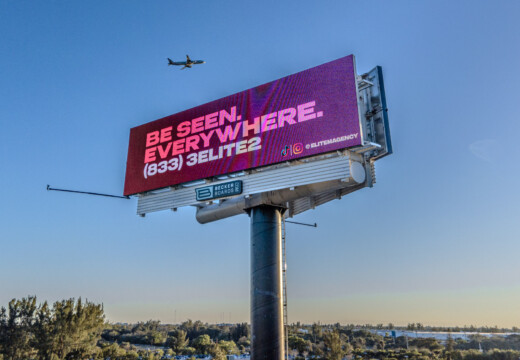
Once you decide to jump on the fruitful bandwagon of advertising, it’s time to set an advertising budget. There are so many advertising channels and you shouldn’t worry about breaking the bank should you choose a particular format, or multiple formats.
While you may believe your budgeting and ad purchasing skills to be reasonable, a whopping 95% of all advertising is wasted. Thus, poor advertising budgeting and planning can afflict even the shrewdest of advertisers. There are several ways that these funds are wasted, such as poor targeting, using the wrong ad methods and failing to reach your well-qualified buyers.
You can avoid falling victim to wasting your ad budget by properly setting an advertising budget in place. Your best bet is to use a variety of advertising forms at the right touchpoints. You should also adhere to budgeting best practices before you create any ad campaign, whether it’s internet-based or OOH.
This post elucidates how to set up an advertising budget so that you can confidently undertake all your advertising projects efficiently while remaining within budget.
There are many factors that make up an advertising budget. Although it may appear daunting and labor-intensive, you can approach it via a step-by-step process. While the following is the process we use, you can follow your own when determining your ad budget.
How to Set an Advertising Budget

At any rate, when you mull this over, you’ll need to break down your overall advertising strategy and estimate how much you’ll be spending on each component of it.
Determine your total ad spend for all your advertising campaigns
Before you calculate how much to spend on particular ad projects, or which channels to use, you’ll need to set aside a designated amount of money that you can realistically afford on all your advertising needs combined.
Consider this your advertising fund, from which you’ll draw money to pay for all your advertising campaigns. At this stage, you should also consider how many times you want to make changes to this budget. If it’s yearly, consider your total ad spend for one year’s worth of advertising; if it’s quarterly, consider your overall expenditures per quarter, and so on.
The actual amount you choose to put towards this fund will depend on a number of factors. These include your revenue, industry, business size and marketing goals. You should also consider this constant aspect of advertising: the higher your fund is, the more money you can place on particular ad campaigns, allowing more potential customers to be exposed to your messaging.
Choose your most pressing advertising goals
Every business wants its messaging to be seen by the masses, but you need to stick with a budget to avoid ad spending waste. In order to do so, consider your most important goals for advertising.
Advertising is essentially a conduit to help you reach your broader marketing and business goals. Before you go any further in creating the campaigns themselves, consider the purposes of your advertising needs. These can be any of the following:
-
- Brand awareness and recall
- Delivering more QI (qualified impressions)
- Growing brand equity
- Product launches and go-to-market strategies
- Educating current and potential customers on your products/services
- Augmenting customer retention and brand loyalty
- Increasing the customer lifetime value
- Reporting your achievements and awards
- Relaying sales and promotions
- Declaring your participation in an event or partnership
Study your consumer base and overall target market
This aspect of advertising budgeting, and marketing in general, is often overlooked, as businesses believe they serve the exact same target market perennially. But this is far from the truth, as customer interests, hobbies and even needs change, even if your potential customers appear to match the age, location and gender of your typical customers.
When it comes to knowing who your customers are and understanding them, nothing remains stagnant. As different trends emerge and wane, so do the interests and engagement levels of your customers. As mentioned before, even the needs of your customers are subject to change. They can be affected by a wide variety of factors, such as changes in income, lifestyle, major life events, living situations, health and more.
You should therefore not just stay informed of your customers’ needs and habits every now and again. Instead, conduct market research for all your ad campaigns, including when you are setting up your budget. This will help you avoid wasting ad dollars. After all, your customers’ circumstances have a major effect on your advertising. For example, the customers who fell within your desired income brackets may have moved out of the geolocation of your business. Or, they may have undergone massive organizational changes.
You want to be top of mind among your customers, so shouldn’t you also keep your customers top of mind? Stay informed and conduct research to properly allocate your ad expenditures.
Select which ad channels to utilize in your campaigns
We suggest you choose your ad channels after you’ve conceptualized your advertising campaigns, at least at a high level. This way, you can designate specific ad channels to their respective campaigns.
There are so many different approaches and channels for advertising. We suggest you experiment with several. In fact, using several ad channels helps boost the success of your main advertising channel.

Here are some of the most prominent advertising methods to implement:
-
- Digital Advertising
- PPC (pay-per-click) on search engines and websites
- PLA (product listing ads)
- Social media ads
- Ads on video hosting websites
- Radio Advertising
- Ads on popular FM radio stations
- Podcast ads
- Television Advertising
- Ads on channels your target market watches
- Ads on OTT (streaming TV services)
- Print Advertising
- Magazine ads
- Newspaper ads
- Flyers and circulars
- OOH Advertising
- Successful companies spend 13% of their revenue on OOH ads
- You can easily quantify your QIs and other impression statuses through OOH advertising
- Print billboard ads
- Dynamic, digital billboard ads
- Digital Advertising
While there are many advertising channels, we insist you choose them based on your QI (qualified impressions) and other impression statuses. Customers who have had 1-3 impressions with your messaging are typically not nurtured enough to be expected to act. Instead, keep building authority and trust until their impression count grows. See how to deliver QIs to learn more.
Estimate ad spend across channels and campaigns
After you’ve chosen your ad channels and assigned them to a particular campaign or campaign, it’s time to estimate your costs. To do so, you’ll need to ascertain the pricing models on the different ad channels you’re going to use.
In addition, consider the intended frequency of your advertisements. Are your ads going to be one-offs on particular channels? Or are they going to be recurrent? How many locations will you be running your ads in? How much do they charge?
Lay out your pricing calculations for each channel, with frequency costs displayed.
To stay on budget, we suggest you use ad platforms that allow you to control your advertising spend in-platform. This ensures your ad won’t appear after you’ve reached your set limit. It will also enable you to avoid paying more than you intended to.
Assess the production costs of your ads
Aside from budgeting the channels you use to display your ads, you’re also going to need to budget the expenditures on creating the ads themselves. The cost of your ad production will include everything you use towards forming your ad creatives, including labor that’s external to your organization.
This can include videography, photo and video editing software, animation, storyboarding, copywriting, graphic design and more. Some brands incorporate paid actors when shooting their ads. This may involve using a third-party agency, which will also cost you.
The key thing to consider when calculating your ad production costs is whether you’ll be using your in-house team, or seeking the help of a third party. Will you need to use both? It’s going to be more expensive if you outsource or use a third-party agency. We suggest sticking to your current employees for ad production as much as possible.
Powering Your Ad Budget with a DOOH Platform
No matter how much revenue your business has at its disposal, spending too much on advertising is a risky endeavor. This is especially dangerous for small businesses. We suggest you set an advertising budget the way we laid out in this article so you’ll never overspend on advertising.
If you spend over the limits of your budget, your business is at risk of not getting the return on investment you sought. You’re also risking wasting money which you won’t easily get back. That’s why we implore you to pay special attention to your advertising methods by selecting the most potent advertising channel.
Blip Billboards is your best bet for DOOH (digital out-of-home) advertising and OOH in general. Our platform is designed to not solely kick out the middlemen (like ad agencies), thereby saving you money on your ad budget. Instead, our DOOH platform empowers your business to run the entirety of your digital billboards through our intuitive platform.
Did we mention Blip is budget-friendly? That’s because you have full reign over your billboard budget. You can set your billboard locations across the country, all of which paint a clear picture of pricing. You also get to set up your advertising budget directly on the Blip platform. Choose your budget by day, week and month. You can also bid on your blips (slots of 8-15-second displays of your ads).
Not convinced yet? You can pause or stop your ads whenever you choose and pay as you go. Our platform gives you so many options to stay within your budget and ensure you reach the right people!


